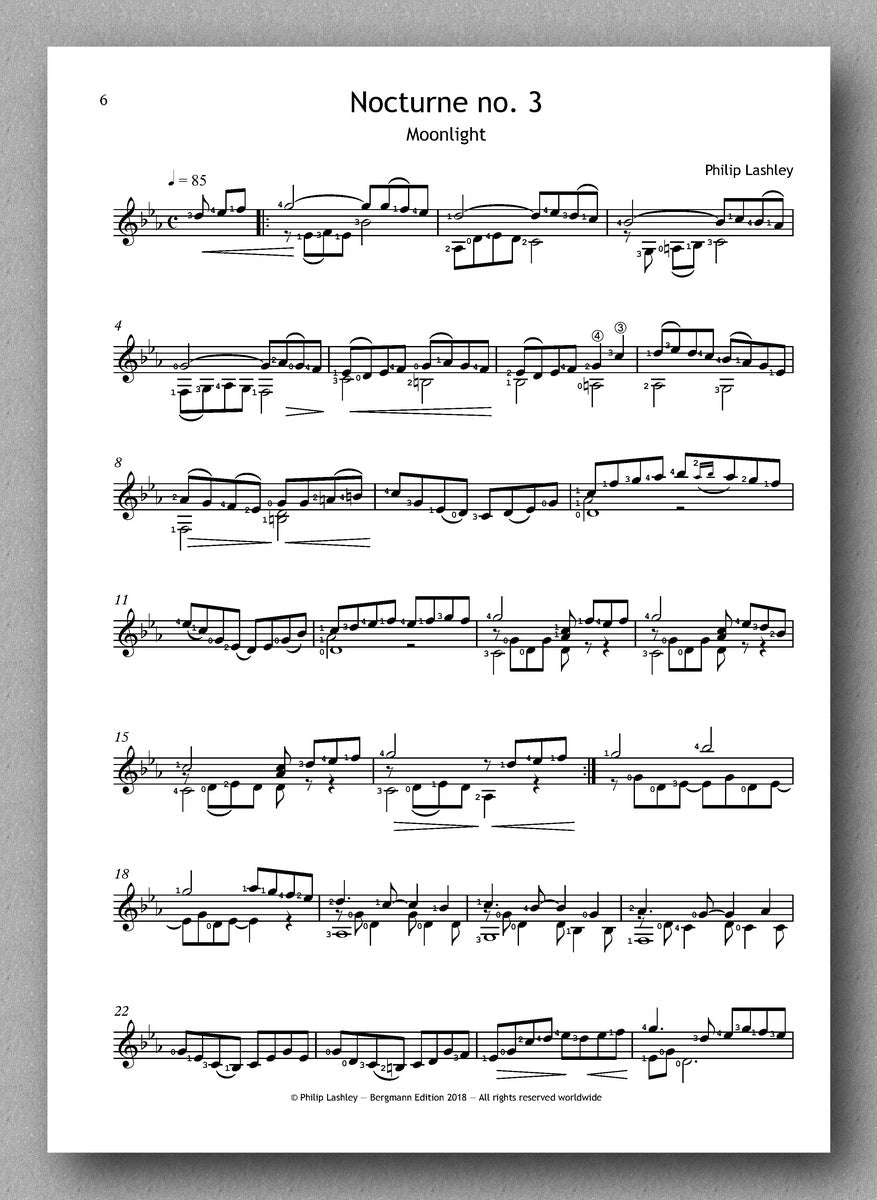Love it? Add to your wishlist
Your favorites, all in one place. Shop quickly and easily with the wishlist feature!
[title]
[message]Philip Lashley, Six Nocturnes
The Nocturne has been evoking images of the night since 1812 with its inventor, John Field. Since then composers such as Chopin, Debussy and even composers of the twentieth have been using the title for their compositions using the lyrical melody and broken chord accompaniment texture that has been characteristic of this type of composition since it’s inception. Lashley’s six nocturnes for guitar follow the original tradition of taste and imagery.
Lashley’s use of harmonics in Starlight is to the ear what the twinkle of a distant star is to the eye, leaving the listener feeling as if they have been soaring among the constellations of the night sky.
Like the gentle flow of a river the second nocturne, Dreaming, begins with an ethereal, rolling C minor arpeggio patiently waiting adrift for its melody to ride atop it. Slumber comes to one’s heavy eyelids upon hearing the whole tone scale run later in the piece.
Moonlight begins with a delightful imitation between the upper and lower voices — question and answer, a conversation between the two parts, developing into a melody and accompaniment fabric with moonbeams dancing from the rippling current of arpeggios.
The repetitive rhythmic figure in the opening of Wanderer conjures up an image of a lost, restless soul’s plod through the darkness of night in search of something they never find. The rhythmic motif is ever present throughout, symbolic of sameness and an unresolved fulfilment of the will.
Anticipation builds as the chords arise in the introduction of Romance leading up to the first theme. A flurry of melody notes glide through the range of the guitar while supporting bass notes march on, some in a chromatic fashion. This set of nocturnes ends with the simple title, “Rain”, with the use of the tremolo technique to emulate a nighttime shower.


